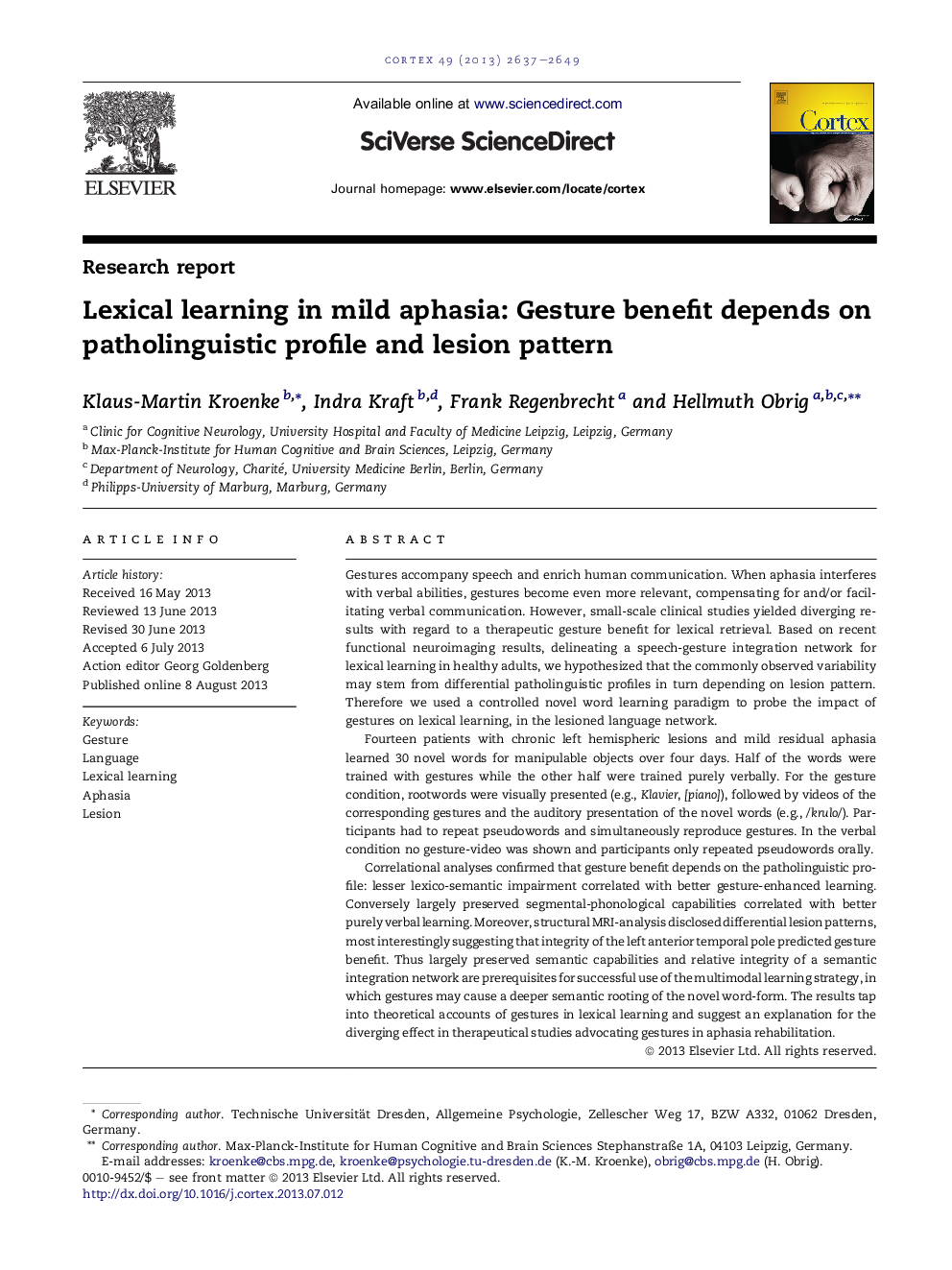| Article ID | Journal | Published Year | Pages | File Type |
|---|---|---|---|---|
| 10463137 | Cortex | 2013 | 13 Pages |
Abstract
Correlational analyses confirmed that gesture benefit depends on the patholinguistic profile: lesser lexico-semantic impairment correlated with better gesture-enhanced learning. Conversely largely preserved segmental-phonological capabilities correlated with better purely verbal learning. Moreover, structural MRI-analysis disclosed differential lesion patterns, most interestingly suggesting that integrity of the left anterior temporal pole predicted gesture benefit. Thus largely preserved semantic capabilities and relative integrity of a semantic integration network are prerequisites for successful use of the multimodal learning strategy, in which gestures may cause a deeper semantic rooting of the novel word-form. The results tap into theoretical accounts of gestures in lexical learning and suggest an explanation for the diverging effect in therapeutical studies advocating gestures in aphasia rehabilitation.
Related Topics
Life Sciences
Neuroscience
Behavioral Neuroscience
Authors
Klaus-Martin Kroenke, Indra Kraft, Frank Regenbrecht, Hellmuth Obrig,
